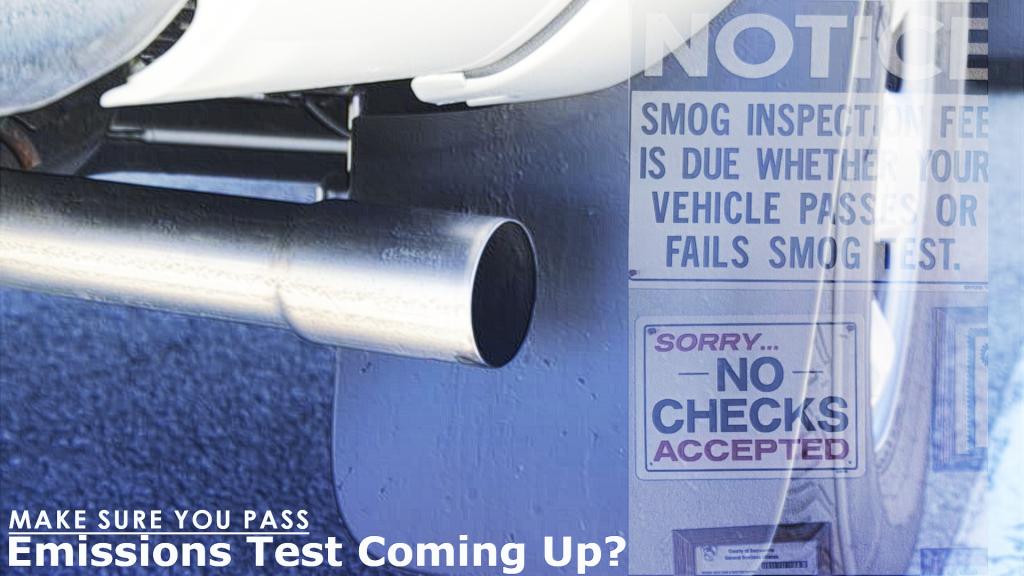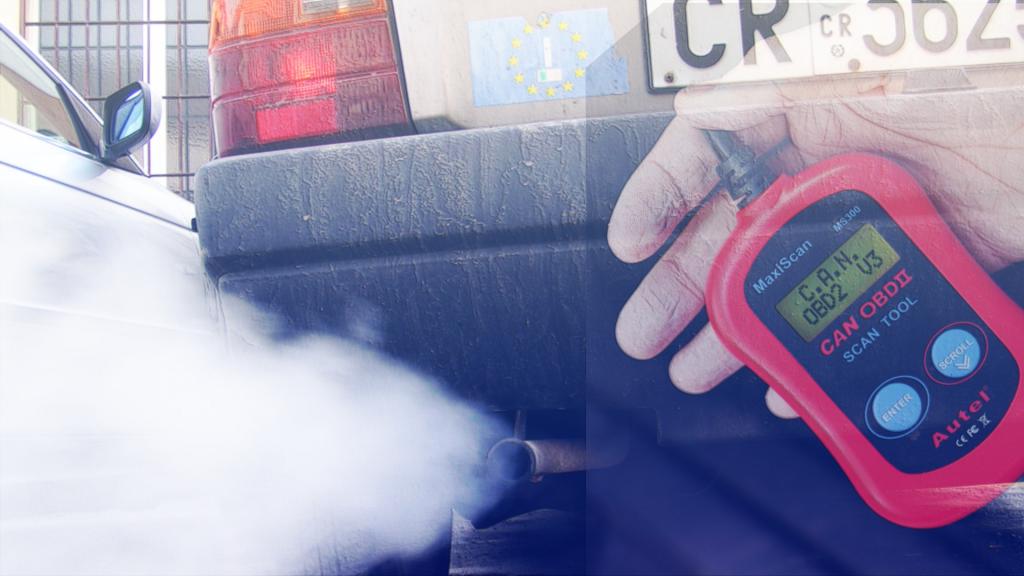
What to do if You Fail The Emission Test
Most states require an emission test before you can register your car. Stricter states such as New York and Vermont require annual smog inspection tests. While other states mandates biennial tests, some only require an car emissions test in urbanized areas.
What is an Emission Test?
An emission test checks the levels of your tailpipe emissions to ensure that toxic gases do not exceed limits. These limits have been defined by your state and the Environmental Protection Agency (EPA).
What States Have an Emission Test
Depending on the state you live in, you could be required to get your car tested at a smog inspection station. Whether you pass or fail will determine if your car needs additional repairs.
What Happens When You Fail The Emissions Test
1. If your vehicle passes the car emissions test, you will receive a certificate allowing you to register your vehicle.
2. If you fail the emission test, you will need car repairs which can cost you lots of money.
….and then what?
If you fail the smog test, you can’t get a license plate or license tabs. Therefore, you won’t be able to drive your car until you get your vehicle repaired.
Once you failed the smog test, the inspection attendant will give you a report. Keep that inspection report in a safe place.
Next, when taking your vehicle in for the necessary repairs report to your auto shop mechanic so they will know what to fix in your car.
Finally, after getting the needed car repairs, bring your car for a second emission test. If you pass, you will be given a certificate from the inspection attendant.
Smog Test Waivers
If you don’t pass the emissions test the second time, then you become eligible for a smog test waiver. However, the waiver depends on the state you live in amd your income eligibility.
Also, to receive the vehicle emissions test waiver, you will need a receipt. The receipt should prove that you spent at least $450 or more on repairs. Or that your cr repairs will cost a hefty amount.
After getting your car repaired, make sure to maintain your vehicle to avoid carbon and other kinds of emission issues.
How to Pass an Emissions Test
How can you pass the emission test and avoid unnecessary delays or extensive repairs?
It’s important to make sure your tailpipe is working properly to avoid air pollution. Smog tests are necessary to make sure that the number of gases caused by vehicles, do not exceed federal and state limits.
Most emission tests will measure the tailpipe for five kinds of emission gases:
1. They measure the amount of nitrogen oxide (NOx).
2. Carbon monoxide (CO).
3. Particulate matter (PM).
4. Non-methane organic gasses (NMOG).
5. Formaldehyde (HCHO).
Types of Testing For Emissions
Depending on the model of your vehicle and the year, there are a few types of inspections to consider.
Most vehicles that are 1996 or newer are subject to an OBD (on-board diagnostics) system check. The OBD test checks your vehicle’s OBD system for potential emissions.
Meanwhile, vehicles that are 1981 and 1995 need to go the I/M240 dynamometer inspection. The I/M240 tests check vehicles using a dynamometer for a road test simulation. Additionally, the test checks if your car’s exhaust emissions are working correctly.
Also, there is a test for all models regardless of the model or year called the gas cap test. The test checks if your gas cap is attached correctly.
California State Standards
If you live in California or the 13 others that adopted its emissions standards, you have to meet its more stringent tests. Make sure you check the codes as they vary from state to state.
The Reasons For Emissions Failure

These are the leading causes of failed smog tests:
1. Rich air-fuel mixture – This could be from a malfunctioning injector or a faulty sensor.
2. Worn spark plugs – Having worn out spark plugs can lead to an increased number of emission gases.
3. A leaking gas cap – This is the easiest problem to fix. If your gas cap is not sealed properly, buy another one that will work.
4. Dirty air filter – The higher levels of hydrocarbons will clog air filters. Dirty filters will cause a failed smog test.
5. Defective “check engine” light – If the “engine check light” isn’t working, it could cause a smog test failure.
6. Damaged catalytic converter – Get your catalytic converter inspected before taking a smog test. If the catalytic converter isn’t fixed, it will produce toxic gasses into the air that cause pollution. Also, you will not pass the smog test.
Before getting your vehicle tested for emissions, take it to a professional mechanic to fix potential problems.
How Long Does an Emissions Test Take
An emissions inspection will usually last 15 to 20 minutes. You won’t have problems if you pass the test. However, once you fail your emissions test, it can open a slew of time-eating and heache-causing problems.
Can an Extended Vehicle Warranty Cover Smog Tests
Most extended warranty companies offer emssions warranty. Some would cover parts and systems that can affect your emissions test such as the catalytic converter.
If you cannot afford a bumper to bumper extended warranty that will cover nearly all of your vehicle components, then buy an extended powertrain warranty contract. A powertrain warranty will cover your exhaust system.
Know more why we chose Autopom! as the best powertrain warranty provider.
How Long Are Catalytic Converters Under Warranty?
Catalytic converters control devices which are built to last for the vehicle’s lifetime, do not usually require replacement.
Depending on how you maintain your car, the manufacturer’s warranty will cover the original catalytic converter. However, reality and experience have taught a lot of car owners that the manufacturer’s warranty is short-lived (3 years/60,000 miles). That is why more people are opting to buy extended warranties to cover common but costly car repairs.
Moreover, the increasingly complicated new cars have made extended warranties imperative. Now, imagine buying a pre-owned car or driving your reliable high-mileage vehicle.
The Future of Emissions Testing
Depending on what state you live in, some will have testing for emissions and some won’t. Currently, there are 33 states that have smog testing in all or certain areas.
Often, states will change to emission standard tests and smog regulations. If this happens, go to your states DMV or DOT website to find out the new regulations. Some states will make this available on the Department of Consumer Affairs or look it up on the DMV.org handy guide.
What Can Make an Area Likely to Require Testing on Emissions?
The more traffic in a certain area, the more likely it will need testing emissions. So if you drive in cities with lots of traffic, chances are you will need testing for smog.
One for the Road
Know more how a car’s exhaust system works:

What to do if You Fail The Emission Test
Most states require an emission test before you can register your car. Stricter states such as New York and Vermont require annual smog inspection tests. While other states mandates biennial tests, some only require an car emissions test in urbanized areas.
What is an Emission Test?
An emission test checks the levels of your tailpipe emissions to ensure that toxic gases do not exceed limits. These limits have been defined by your state and the Environmental Protection Agency (EPA).
What States Have an Emission Test
Depending on the state you live in, you could be required to get your car tested at a smog inspection station. Whether you pass or fail will determine if your car needs additional repairs.
What Happens When You Fail The Emissions Test
1. If your vehicle passes the car emissions test, you will receive a certificate allowing you to register your vehicle.
2. If you fail the emission test, you will need car repairs which can cost you lots of money.
….and then what?
If you fail the smog test, you can’t get a license plate or license tabs. Therefore, you won’t be able to drive your car until you get your vehicle repaired.
Once you failed the smog test, the inspection attendant will give you a report. Keep that inspection report in a safe place.
Next, when taking your vehicle in for the necessary repairs report to your auto shop mechanic so they will know what to fix in your car.
Finally, after getting the needed car repairs, bring your car for a second emission test. If you pass, you will be given a certificate from the inspection attendant.
Smog Test Waivers
If you don’t pass the emissions test the second time, then you become eligible for a smog test waiver. However, the waiver depends on the state you live in amd your income eligibility.
Also, to receive the vehicle emissions test waiver, you will need a receipt. The receipt should prove that you spent at least $450 or more on repairs. Or that your cr repairs will cost a hefty amount.
After getting your car repaired, make sure to maintain your vehicle to avoid carbon and other kinds of emission issues.
How to Pass an Emissions Test
How can you pass the emission test and avoid unnecessary delays or extensive repairs?
It’s important to make sure your tailpipe is working properly to avoid air pollution. Smog tests are necessary to make sure that the number of gases caused by vehicles, do not exceed federal and state limits.
Most emission tests will measure the tailpipe for five kinds of emission gases:
1. They measure the amount of nitrogen oxide (NOx).
2. Carbon monoxide (CO).
3. Particulate matter (PM).
4. Non-methane organic gasses (NMOG).
5. Formaldehyde (HCHO).
Types of Testing For Emissions
Depending on the model of your vehicle and the year, there are a few types of inspections to consider.
Most vehicles that are 1996 or newer are subject to an OBD (on-board diagnostics) system check. The OBD test checks your vehicle’s OBD system for potential emissions.
Meanwhile, vehicles that are 1981 and 1995 need to go the I/M240 dynamometer inspection. The I/M240 tests check vehicles using a dynamometer for a road test simulation. Additionally, the test checks if your car’s exhaust emissions are working correctly.
Also, there is a test for all models regardless of the model or year called the gas cap test. The test checks if your gas cap is attached correctly.
California State Standards
If you live in California or the 13 others that adopted its emissions standards, you have to meet its more stringent tests. Make sure you check the codes as they vary from state to state.
The Reasons For Emissions Failure

These are the leading causes of failed smog tests:
1. Rich air-fuel mixture – This could be from a malfunctioning injector or a faulty sensor.
2. Worn spark plugs – Having worn out spark plugs can lead to an increased number of emission gases.
3. A leaking gas cap – This is the easiest problem to fix. If your gas cap is not sealed properly, buy another one that will work.
4. Dirty air filter – The higher levels of hydrocarbons will clog air filters. Dirty filters will cause a failed smog test.
5. Defective “check engine” light – If the “engine check light” isn’t working, it could cause a smog test failure.
6. Damaged catalytic converter – Get your catalytic converter inspected before taking a smog test. If the catalytic converter isn’t fixed, it will produce toxic gasses into the air that cause pollution. Also, you will not pass the smog test.
Before getting your vehicle tested for emissions, take it to a professional mechanic to fix potential problems.
How Long Does an Emissions Test Take
An emissions inspection will usually last 15 to 20 minutes. You won’t have problems if you pass the test. However, once you fail your emissions test, it can open a slew of time-eating and heache-causing problems.
Can an Extended Vehicle Warranty Cover Smog Tests
Most extended warranty companies offer emssions warranty. Some would cover parts and systems that can affect your emissions test such as the catalytic converter.
If you cannot afford a bumper to bumper extended warranty that will cover nearly all of your vehicle components, then buy an extended powertrain warranty contract. A powertrain warranty will cover your exhaust system.
Know more why we chose Autopom! as the best powertrain warranty provider.
How Long Are Catalytic Converters Under Warranty?
Catalytic converters control devices which are built to last for the vehicle’s lifetime, do not usually require replacement.
Depending on how you maintain your car, the manufacturer’s warranty will cover the original catalytic converter. However, reality and experience have taught a lot of car owners that the manufacturer’s warranty is short-lived (3 years/60,000 miles). That is why more people are opting to buy extended warranties to cover common but costly car repairs.
Moreover, the increasingly complicated new cars have made extended warranties imperative. Now, imagine buying a pre-owned car or driving your reliable high-mileage vehicle.
The Future of Emissions Testing
Depending on what state you live in, some will have testing for emissions and some won’t. Currently, there are 33 states that have smog testing in all or certain areas.
Often, states will change to emission standard tests and smog regulations. If this happens, go to your states DMV or DOT website to find out the new regulations. Some states will make this available on the Department of Consumer Affairs or look it up on the DMV.org handy guide.
What Can Make an Area Likely to Require Testing on Emissions?
The more traffic in a certain area, the more likely it will need testing emissions. So if you drive in cities with lots of traffic, chances are you will need testing for smog.
One for the Road
Know more how a car’s exhaust system works:


